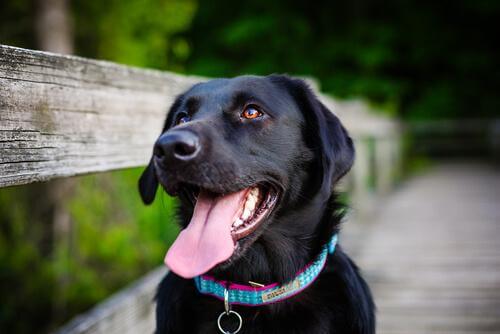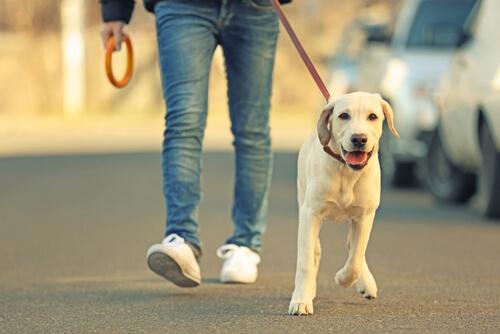How to Get Your Dog to Wear a Collar


Written and verified by the lawyer Francisco María García
Getting a dog comfortable enough to wear a collar is the first step in their adapting to it, and, subsequently, to a leash.
It’s important that you remain patient and calm as you introduce this new element into your puppy’s life. In this way, you’ll be able to overcome any unforeseen or uncomfortable moments with your dog.
Firstly, you must let the dog see and smell the collar you’re to put around its neck. Then put it on and distract them, either by enticing the animal to play or by giving them food.
You’ll have to do this for five to ten minutes every day. After that, remove the collar at the end of each session. Three days later, your pet will gladly wear a collar.
How to get a dog to wear a collar
Dogs, on the whole, are happy to wear a collar, although some are a bit scared to have something around their necks at first. If your dog reacts with fear, then it might take a little longer for him to get comfortable with it and to remain calm when having it on.

In order to get him used to a leash, you’ll have to repeat the same process. Allow the dog to see it, smell it and become familiar with it. Put it on him, but don’t pull.
Leave the leash hanging and play with him as you did when you first put on the collar on him. Then, repeat this exercise for three days. Now, hold the leash while you play with the dog. However, you should do this in a way that he won’t figure out that you’re actually training him to use it.
The key is not to hold on to it too tightly. If you do this, the dog will get defensive and won’t want to restrained by it, nor led with it.
Properly attach the collar and the leash
When putting the collar around the neck of your dog, don’t tighten it too much as it’ll be uncomfortable.
A good time to put it on is when the dog is distracted: when they’re eating something they like for example. Subsequently, try to get them to make the connection between wearing a collar and something pleasant happening.
Walk the walk
There’s no ideal system for teaching dogs how to learn to use a leash You should try different techniques to teach your furry friend to walk without pulling.
When you approach the dog with the leash in your hand, they may start barking, moaning, turning or jumping. In situations like this you should simply wait for it to completely calm down.
A good trick is to do nothing or say nothing until the animal has settled down. As soon as they’re calm and their four legs are touching the ground, approach them calmly and put on the strap.
As for pulling, the dogs will be stressed when pulled and, in turn, they’ll pull harder. It’s also a good idea to jog and run during the walk so that they pay less attention to the leash. Furthermore, a faster pace is more beneficial for canines’ mobility.

Offering a treat is also useful for the dog to become familiar with a leash. In this way, the animal will associate the leash and the collar with pleasant experiences.
Keep in mind that the collar shouldn’t be too loose or too tight. The proper way to attach it is for the space between the collar and the neck to allow a finger to go through.
If the collar is too loose, it could get caught, or the dog will be able to remove it easily. On the other hand, if the collar is too tight, it’ll most likely cause them discomfort. This could be in the form of breathing difficulty and swallowing.
The length of the leash
The normal leash that you’ll use shouldn’t be more than 7 feet long, especially when you’re training the dog to wear it. If the leash is too long, the animal can run and speed up before it reaches the end of the lead. An abrupt pull would be likely to hurt their necks.
This text is provided for informational purposes only and does not replace consultation with a professional. If in doubt, consult your specialist.